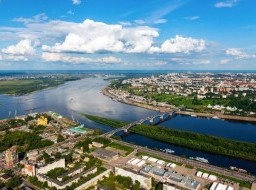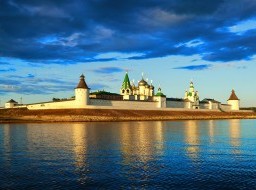Pechersky Ascension Monastery
One of the oldest centres of spiritual life in Russia, this monastery on a high right bank of the Volga was founded by Dionysos, a monk of the Kiev Pechersk Monastery, in the 14th century, and was then 5 kilometres away from the town of Nizhny Novgorod. Following a devastating landslide in 1597, it was moved closer to the town. The monastery’s name comes from the word “pechera,” or “cave.” The early monks dug themselves caves to live in. They say that it was here, at the Pechera Monastery, that the Starets Laurentios wrote most of his chronicle – one of the oldest surviving handwritten books in Russia. The spiritual path of the future Patriarch Nikon, reformer of the Russian Orthodox Church, began at the Pechera Monastery. The historical buildings and structures surviving to this day on monastery grounds include the fence and the front gate, the white-stone churches, cells of the brothers, and the archbishop’s chambers – all specimens of 17th-century Russian architecture, some of them exemplifying tent-roofed architecture. Also on monastery grounds is the History Museum of the Nizhny Novgorod Eparchy, where the exhibits on display include priests’ vestments from different epochs, old holy vessels, pre-1917 books and documents. One of the rooms, filled with antique furniture, is a photo studio where photographs can be taken amid period furniture from the centuries past. |











